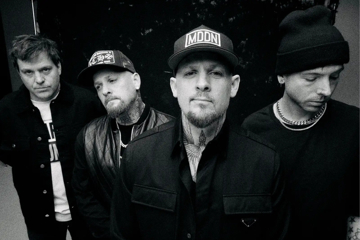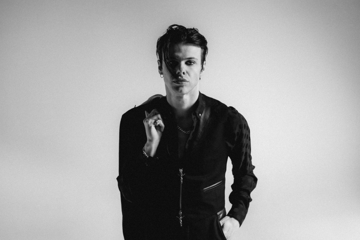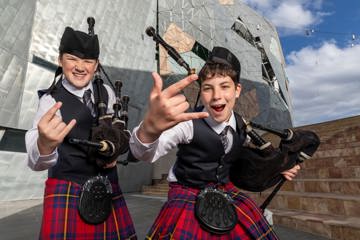Brothers In Arms: How Canberra Store Songland Powered John Swan’s Comeback
John 'Swanee' Swan has made a massive comeback by way of new album 'Believe,' but as he explains, it certainly wasn't a solo effort.

Swanee (Source: Supplied)
One of the credits on soul singer John “Swanee” Swan’s long awaited comeback album Believe goes: “powered by Songland Records”.
The music store in Canberra was set up by music industry veteran Brian ‘Frog’ Harris. Over 45 years, he worked in retail, record labels RCA/BMG and CBS/Sony, and media outlets.
Irritated by how he sees major labels today hardly promoting releases past a few weeks, he has pre-empted “legacy” names as Rob Hirst, Midnight Oil, V. Spy V. Spy, ReggaeSpys, John Schumann and Richard Clapton to release new music on CD.
He also worked with the Australian Road Crew Association (ARCA) to expand its Desk Tape Series to include CD versions, and was one of the music executives who helped engineer Russell Morris’ multi-platinum comeback trilogy.
“If a project is pushed just a little way, it indicates a lack of confidence in it,” Harris relays. “If you don’t make it physically available it has no chance of success.”
Believe came out on August 1st as a 16 track CD and 16 track gatefold double album.
Don't miss a beat with our FREE daily newsletter
Four weeks before, there was such an advance demand for Believe that Harris had to put in a second order.
In the same way of returns-to-the-fast-lane by John Farnham, Daryl Braithwaite and Russell Morris, Harris reckons Swan’s record could easily sell 100,000.
“No pun intended, but I absolutely believe that,” he says. “100,000 is a ridiculous number in today’s climate.
“But Australians will support a comeback by a real talent who’s been out of the spotlight for too long and has a great well-thought-out product.
“Swanee’s last album from ten years ago, One Day At A Time, was an absolute cracker. So when the time came to work with him, it was like all my decades in the music industry was building up to this.
“I oversaw the artwork, the manufacture and the marketing.”
Two Years
Two years ago, Swan was working on his next record. He had been working with Australian producer Mark Moffatt on a project called Kilo Band.
Some great music was made. But it fizzled through distance (Moffatt was in Nashville, and Swan in Coffs Harbour, NSW) and the producer’s lengthy battle with an illness that saw him pass away last September
“The start of the record came from my wanting to record with my brothers Jim and Alan (Barnes) before I fell off this mortal coil.”
The song Brother Of Mine had been written by guitarist Tommy Emmanuel and US based writer Steve Kipner, about Emmanuel’s late brother Phil who died in 2018.
The guitarist had given it to Swan to record, but he felt he was not ready. A few years later, it seemed the perfect move.
“The lyrics were perfect for what I wanted to say with my brothers. Everything comes together when the universe is ready. That happened quite a few times on the making of this record.”
“I’ve heard Brother Of Mine at least 50 times now, and each time I get tears,” says Harris. “The sentiment of the song, and that moment when the three harmonies come in…”
Alan also took on Delaney & Bonnie’s Well Well while Jim did Dark End Of The Street.
Swan’s idea of the album then extended to other musicians whom Swan considered his brothers.
“These were people whom I adored. Some of them I’d sit with for hours and hours and talk about everything like life and boxing, and not music. It was that kind of bond.”
One evening he texted 13 of them, with just one paragraph: “I’m doing a duets album, would you care to join me on a song?”
He was expecting not to get a response for at least two weeks. He switched on the TV and watched a Matildas soccer game.
Suddenly his phone alerted him to a host of messages. PING! PING! PING!
Their responses were similar: “Fucking hell, YES! When do you want to do it?”
Swan remembers, “They didn’t even ask what song they were going to do.”
Soul
He asked Diesel to write him a song. Next day he was given Where Is My Soul. Jon Stevens joined in on Bobby "Blue" Bland’s Ain’t No Love In The Heart Of The City.
Joe Camilleri is on board for Solomon Burke’s Cry To Me, Wendy Matthews for Bob Dylan’s Don’t Think Twice It’s Alright, and Russell Morris blends in for a rendition of Eric Bibb’s With My Maker I Am One.
Swan’s niece Mahalia Barnes on the Curtis Mayfield perennial People Get Ready keeps the all-in-the-family theme, Jack Jones tackles another soul classic, Sam Cooke’s Bring It On Home To Me, and Ian Moss does mic and guitar duties on Stevie Wonder’s Lately.
There Is A Road, written 40 years by the two, saw Kevin Borich and his producer drive down from the guitarist’s home on the Sunshine Coast to Coffs Harbour to record it.
“He sat on the lounge with his laptop, did two takes, nailed it, had a cup of herbal tea, and drove the seven hours back to the Sunshine Coast because he had commitments,” Swan remembers.
It’s a meeting of the Scots when Swan and Colin Hay meet up on the Scottish folk ballad Caledonia.
It was written in 1977 in ten minutes by Dougie MacLean (Caledonia is the Latin word for Scotland) while he was sitting on the beach in Brittany, France, feeling homesick.
Glasgow
It’s not surprising Swan would have been drawn to a song like this. He was 10 when the family moved from the Glasgow slums to the migrants’ hub of Elizabeth in South Australia.
He doesn’t remember much of his Scotland days but says a Scottish essence always follows him. In those days, Australian-born lads would pick fights with new arrivals with strong accents.
Swan was handy with his fists and was a state champion boxer in his age group. The story goes that at school he deliberately wore a kilt just to antagonise the skips.
“There’s an element of truth in that. But part of it is I didn’t have good shoes, my shirts were dirty and ripped around the collar.
“The headmaster, ‘You can't wear that!’ I replied, ‘Sez who?’ As the eldest of six kids, you had to think on your feet. When people take the mickey it’s defiance. Girls would ask ‘Is it true Scots don’t have underwear under their kilts.” I’d say, ‘Want to find out?’”
When Swan first played Harris the initial half a dozen tracks, the executive was pleased with them. But he thought it needed more balance.
Harris: “The timbre and tempo were wonderful but the record was too low key. We needed an album that takes you on a journey, like (Bruce Springsteen’s) Born To Run or (Meat Loaf’s) Bat Out of Hell, for instance.
“There’s a starting track, a peak, and great songs at the end which tie the album together.”
Harris’ vision for Believe was to base it on a live show where Swan would be joined throughout by his friends with their amazing voices.
“But at the end of the day, it was a Swanee album, and I wanted a song which he sang solo.
“So you had the live show, he’d be having guests throughout, and then at the end, there’d be just him in the spotlight finishing it off.
“Believe is a legendary (US country duo) Brooks & Dunn song – and I don’t use that term lightly – and it was just perfect for a solo song on an album of duets.”
Swan immediately realised that the album had to be titled Believe.
To him it was about believing in music’s awesome exhilarating and healing powers. It wasn’t just about the brotherly and sisterly love he felt with other musicians.
It also captured how music changed the lives of four autistic children that he taught to sing and play guitar.
One who seldom spoke before his lessons ended up getting turned on to heavy metal and writing songs to express emotion. He ended up playing in a band at school. That was a turning point: those who ribbed him or ignored him, suddenly wanted to be friends.
Music also gave Swan some highs and lows in his life.
At 13, after being sexually abused by a family friend, he left home and ended up in bands.
One of them was the hippie band Fraternity, for which he plays drums. He moved to vocals when its singer, Bon Scott, left. He was also on drums the day Malcolm and Angus “auditioned” Bon for AC/DC. Swan was one of those considered as a replacement when Bon died.
The teenager was quickly mentored by Billy Thorpe and Max Merritt. But hanging out with much older musicians who were in their late 20s opened him up to some bad vices.
These days he’s given up drinking and drugs. He says he looks and sings better than he ever has.
Music also led him to befriending some of his idols and a host of road warrior tales.
One time in a Melbourne club, he and his band started to play their version of the Small Faces classic Tin Soldier.
Out of the darkness a Cockney voice shouted out, “What the fuck you doing with my song, ya fuckin’ Scottish geezer?”
It was the song’s writer and Small Faces’ leader Stevie Marriott, who was touring Australia at the time.
Marriott jumped up and jammed with Swan’s band. The next night at another club, Marriott invited him to come onstage and jam with his band.
“The photo and him and me singing Tin Soldier is one of my prize possessions. Afterwards he invited me back to his hotel room for a drink. I got out of there three days later, we just talked and talked and talked.”
Another time after a Party Boys gig, a roadie told Swan, “Some Scottish guy wants to come into the dressing room.”
“Oh God, he probably just wants to drink and I won’t be able to get rid of him. Tell him to wait.”
Swan continued to play darts. After 45 minutes the belligerent Scotsman began banging on the door and finally broke in the door.
He made his way to the singer and bellowed, “Och too busy to see me were you!” It was Billy Connolly, and they became friends.
Two
Two other songs that Harris suggested for Believe was the hard rock All I Ever Wanted on which Screaming Jets’ Dave Gleeson sings and Rick Springfield plays guitar.
Another was a ballad Should’ve Never Let You Go, which came from the most unlikely source of US balladeer Neil Sedaka.
Harris was working at Sedaka’s record company in the 1980s when the song was released, featuring a duet with Sedaka’s daughter Dara.
It barely got radio airplay then and scraped into the Top 40.
But Harris thought it a beautiful song, and stored it away in his memory, knowing there’d be a project where he could use it.
He pitched it to Swan. “I’ve got this song I’ve been sitting on for 40 years. It’s a beautiful song, it’ll make the album less blokey, and it’ll appeal to the older demographic who bought (Swan’s earlier hit) Lady What’s Your Name.
“I told him, “I’ll send it to you. If you don’t like it, I get it’. He rang back five minutes later, ‘I love it, who shall we get to sing with me’?”
Harris country singer Melinda Schneider, whom he had worked on projects together, would be the most perfect.
He called her and, after explaining the idea behind Believe, told her, “I’ve got this song you’ve never heard, it’s a Neil Sedaka number which he recorded with his daughter.
At that point, Schneider started singing the song over the phone. “My mum (a singer) used to sing that to me.”
Should’ve Never Let You Go is the first single off Believe, with Brother Of Mine to follow.
Songland’s strategy is to keep drip-feeding the tracks and keep the album alive at least until Christmas.
Believe is available now as a physical project, with a digital release not yet announced.
This piece of content has been assisted by the Australian Government through Music Australia and Creative Australia, its arts funding and advisory body








